
In an extraordinary stroke of scientific fortune, researchers shooting a geological documentary in Sardinia’s Ogliastra region stumbled upon something completely unexpected—fossilized dinosaur footprints.
Found near Baunei and dated to roughly 165 million years ago, these tracks offer the first direct proof that dinosaurs once roamed the island during the Middle Jurassic era. Preserved in ancient rock, the footprints belong to a previously undocumented species already nicknamed “Bibi” by the research team. The find has excited paleontologists worldwide and reshaped assumptions about Sardinia’s prehistoric landscape.
The team behind the discovery includes professors Antonio Assorgia, Sergio Ginesu, and Stefania Sias, formerly of the universities of Sassari and Cagliari. Their work opens a fascinating new chapter in the island’s natural history, blending documentary filmmaking with breakthrough science.
A Serendipitous Discovery in Sardinia’s Rugged Hills
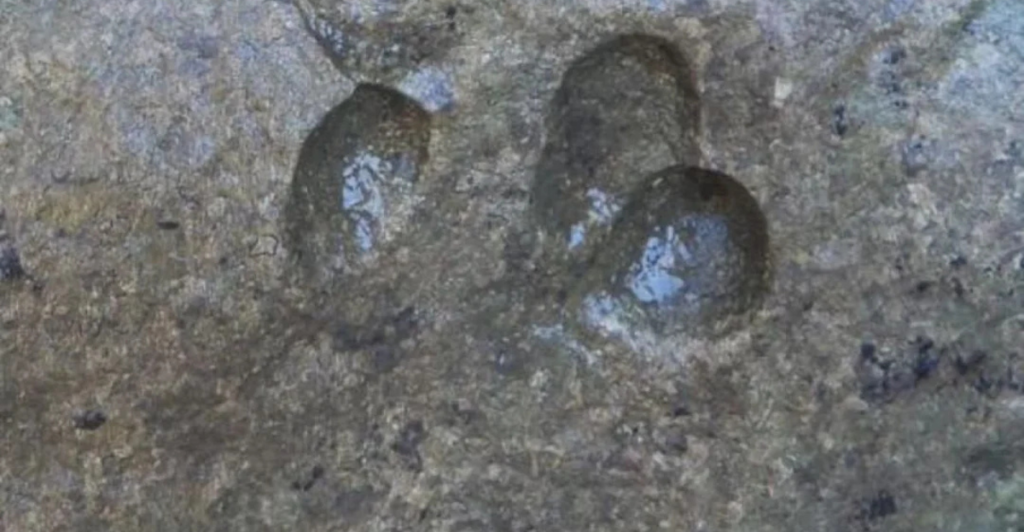
What began as ordinary fieldwork turned extraordinary when researcher Stefania Sias noticed unusual impressions in the stone while filming in Baunei. Capturing the region’s topography for a geology documentary, she spotted the fossilized tracks embedded in sediment hardened over millions of years.
“This extraordinary discovery came about almost by accident,” said producer Francesco Ginesu. The prints, preserved in ancient mud and sand, dated back 165 million years—an unanticipated glimpse into Sardinia’s Jurassic past. The discovery was officially shared with the public on April 11, 2025.
This rare find, hiding in plain sight, underscores how sharp observation in familiar environments can lead to profound scientific insight. It also marks Sardinia’s first definitive evidence of dinosaur life, rewriting the paleontological record for the region.
Uncovering ‘Bibi’: The Dinosaur That Walked Sardinia
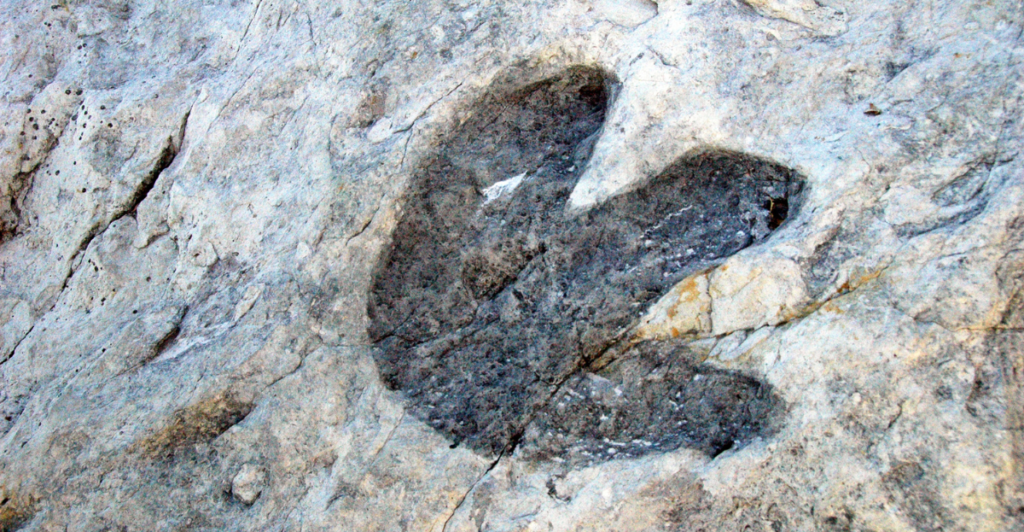
Nicknamed ‘Bibi,’ the dinosaur whose tracks were discovered in Sardinia is offering researchers a rare window into Jurassic life. Based on analysis of the fossilized footprints, scientists estimate Bibi stood between 120 and 160 centimeters tall and walked upright.
Although initially assumed to be a carnivorous theropod, the absence of claw marks changed that view. “The footprints speak to us and tell us what things were like 165 million years ago,” explained paleontologist Marco Zedda. He concluded the dinosaur was likely herbivorous. While the team speculates Bibi may have been female, additional evidence is needed to confirm this.
The careful classification process reflects how paleontologists build conclusions through trace evidence. Bibi now stands as a key piece in understanding Sardinia’s ancient ecosystem and its Jurassic-era inhabitants.
The Experts Who Brought Bibi to Light
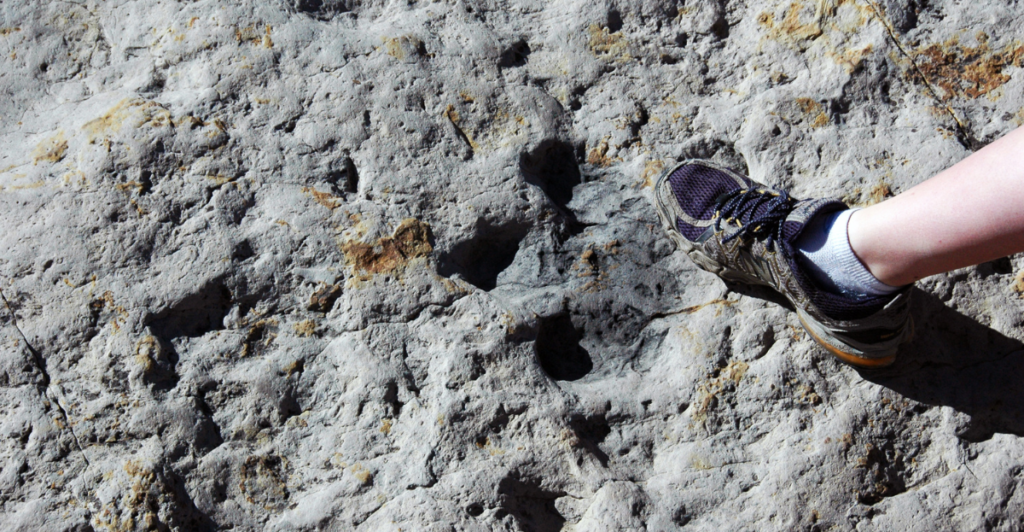
This scientific breakthrough was possible thanks to a collaborative team of experts whose training and keen observation made all the difference. Professors Antonio Assorgia, Sergio Ginesu, and Stefania Sias—all formerly affiliated with the universities of Sassari and Cagliari—played key roles in the discovery.
It was Sias who first recognized the unusual marks in the rocks as potential dinosaur tracks. Her initial observation set off a detailed investigation supported by the team’s geological and paleontological expertise. Later, paleontologist Marco Zedda joined the project, analyzing the footprint shape and depth to interpret Bibi’s physical traits and behavior.
The discovery highlights the value of interdisciplinary cooperation in scientific research. What could have been dismissed as geological oddities instead became crucial evidence of dinosaur life in a region previously lacking such fossils.
Tracing Time: Dating Sardinia’s Jurassic Footprints
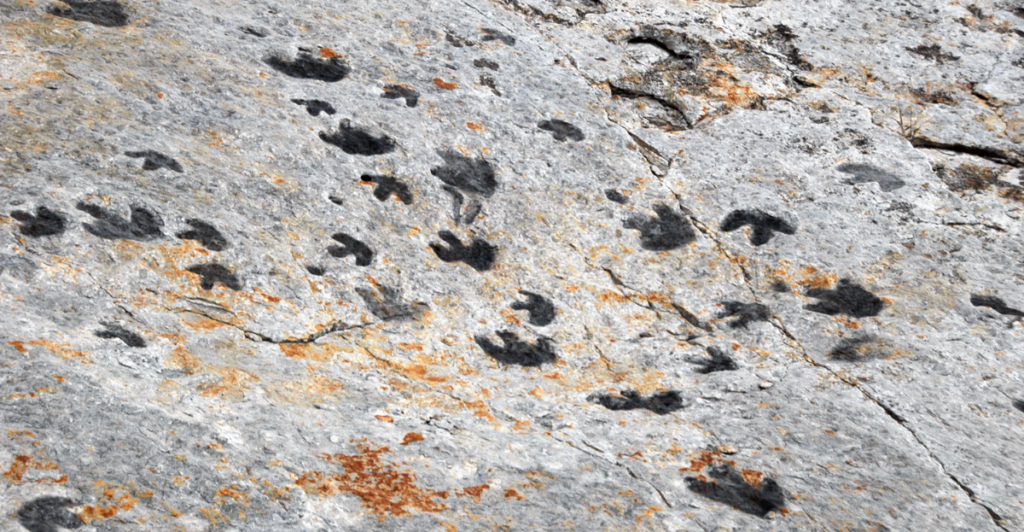
The dinosaur tracks uncovered in Sardinia are estimated to be around 165 million years old, placing them firmly in the Middle Jurassic era. This period, spanning 174 to 163 million years ago, was marked by evolutionary shifts following the Early Jurassic extinction and the fragmentation of the supercontinent Pangaea.
These transitions gave rise to diverse dinosaur species across emerging landmasses. The age of the footprints was determined through stratigraphic and carbon dating techniques, aligning the find with other similar European discoveries. Such precise dating gives scientists a clearer picture of how life evolved in the region over time.
It also suggests that dinosaurs inhabited Sardinia during a critical evolutionary window, offering new clues about how ancient ecosystems functioned before continental drift isolated the Mediterranean islands.
What Sardinia Looked Like 165 Million Years Ago
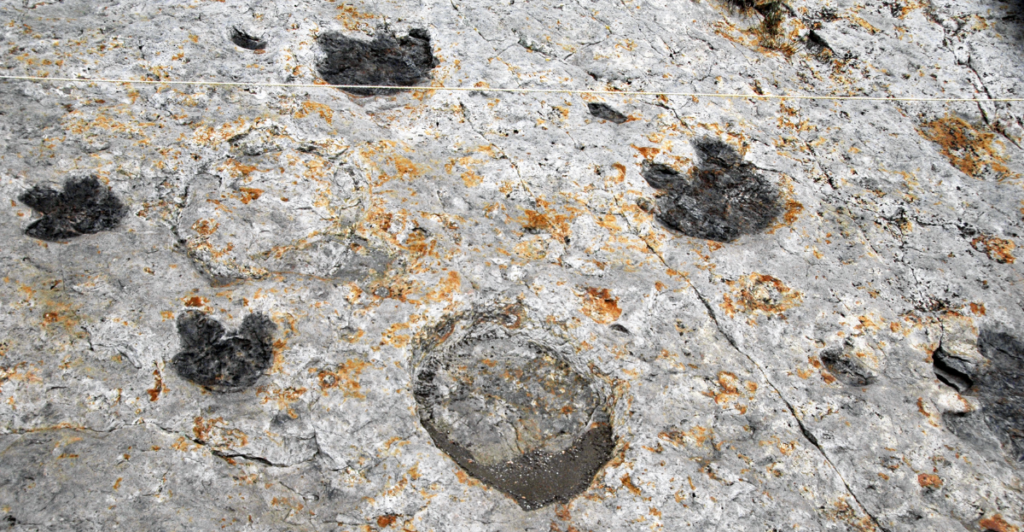
The fossilized tracks near Baunei offer more than proof of dinosaur life—they help reconstruct Sardinia’s long-lost landscapes. The rock layers where Bibi’s footprints were found suggest that the area was once a coastal marsh, rich in mudflats and sandy zones shaped by tides.
Such conditions were ideal for preserving footprints, as soft mud hardened into rock over millions of years. This ancient environment likely supported abundant plant life, creating a suitable habitat for herbivorous dinosaurs like Bibi. “Thanks to this exceptional discovery, it was possible to reconstruct the animal and the environment in which it lived,” noted researchers.
The same rock slab also revealed traces of other creatures, hinting at a diverse and dynamic Jurassic ecosystem where multiple species coexisted and adapted to a shifting coastal terrain.
First Evidence: Why This Discovery Matters for Sardinian Paleontology
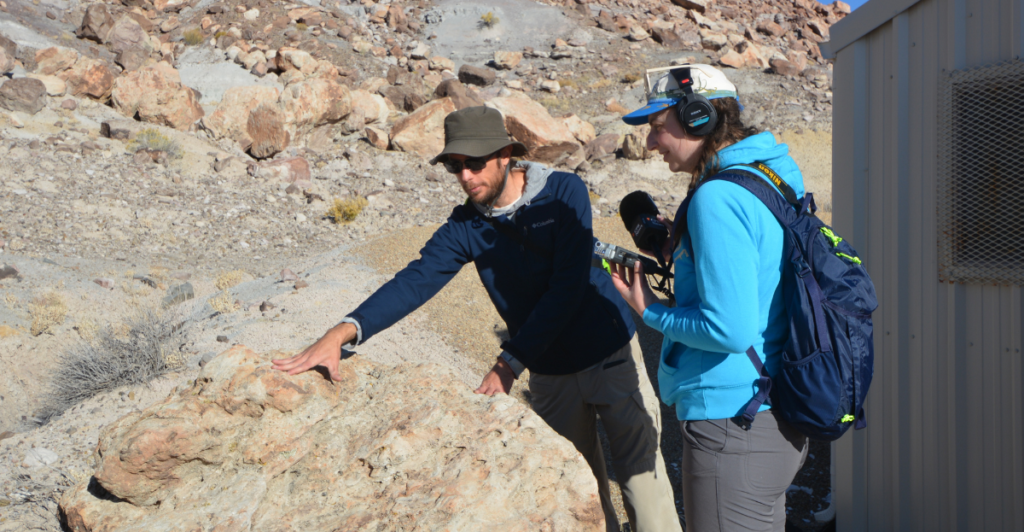
Until now, no direct dinosaur evidence had ever been confirmed in Sardinia, making this discovery a transformative moment for paleontology on the island. The footprints provide the first concrete proof that dinosaurs lived in the region during the Mesozoic era.
“This is not just another piece of data: it’s direct evidence of the presence of dinosaurs in an area that until now had no such evidence,” said Francesco Ginesu. This finding challenges older theories suggesting Sardinia’s isolation from mainland Europe during the Jurassic.
It also supports the idea that dinosaur populations were more widespread across early Mediterranean landscapes than previously believed. With this new data, Sardinia joins a broader network of European sites documenting dinosaur life, offering new context and complexity to the island’s prehistoric timeline.
How a Film Project Became a Scientific Breakthrough

This milestone in paleontology owes its origins to a film crew exploring Sardinia’s geology. What was intended as a geomorphological documentary pivoted unexpectedly after the crew stumbled upon ancient footprints near Baunei.
“As is often the case in science, this could fundamentally alter our understanding,” said producer Francesco Ginesu. The documentary has since transformed to include the historic find, turning a geology-focused story into one of prehistoric revelation. This moment illustrates how creative collaborations—especially in media—can unlock scientific breakthroughs, particularly when they venture into lesser-studied landscapes.
Documentaries, by nature of their exploratory lens, often capture subtle details researchers might overlook. In this case, the film not only documented terrain but also unearthed Sardinia’s long-hidden dinosaur history.
The Hidden Science of Footprints and What They Reveal
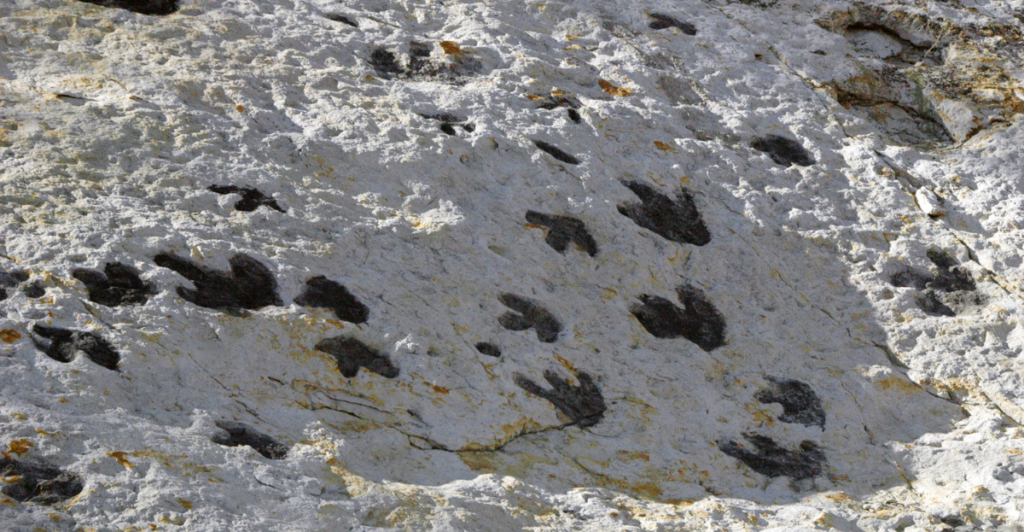
The discovery of Bibi’s tracks adds to a field known as ichnology—the study of trace fossils like footprints. Unlike bones, these traces provide dynamic insights into how dinosaurs moved, lived, and behaved. “The footprints tell us stories about life 165 million years ago,” said Marco Zedda at the press event.
Analyzing the depth, stride, and shape of each print, researchers can estimate Bibi’s size, gait, and even group behavior. The lack of claw marks suggests a plant-based diet, which contradicted early classification as a theropod.
Such findings show how footprints serve as snapshots of life in motion, offering data on ancient behavior rather than just skeletal anatomy. Through ichnology, paleontologists can reconstruct how creatures interacted with their environments—down to where they walked and how fast they moved.
What Comes Next for Bibi and Sardinian Science
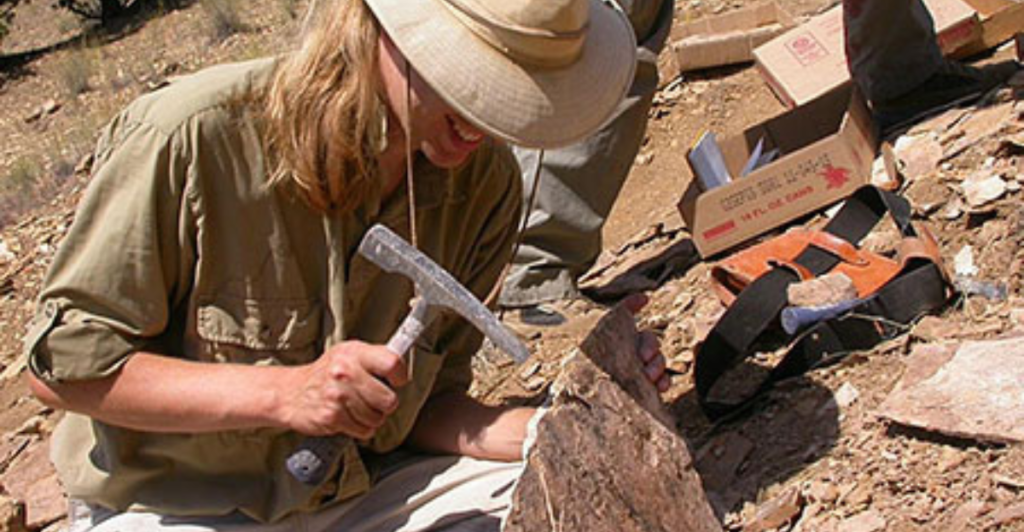
The discovery of Bibi’s tracks marks only the beginning of what could become a major scientific and cultural development for Sardinia. Paleontologists are now expected to focus more intensely on the Ogliastra region, hoping to uncover additional fossils that deepen our understanding of Jurassic biodiversity on the island.
Advanced technologies like 3D modeling and photogrammetry will be used to create accurate, sharable records of the tracks. Beyond scientific study, the site has potential to become a heritage attraction, drawing visitors much like other European tracksites in Portugal and Spain.
Local officials may develop educational and conservation efforts to protect the site while promoting public engagement. This discovery underscores how even regions long thought to be fully explored can still harbor secrets—waiting for the right moment, or camera, to reveal them.
Explore more of our trending stories and hit Follow to keep them coming to your feed!

Don’t miss out on more stories like this! Hit the Follow button at the top of this article to stay updated with the latest news. Share your thoughts in the comments—we’d love to hear from you!







